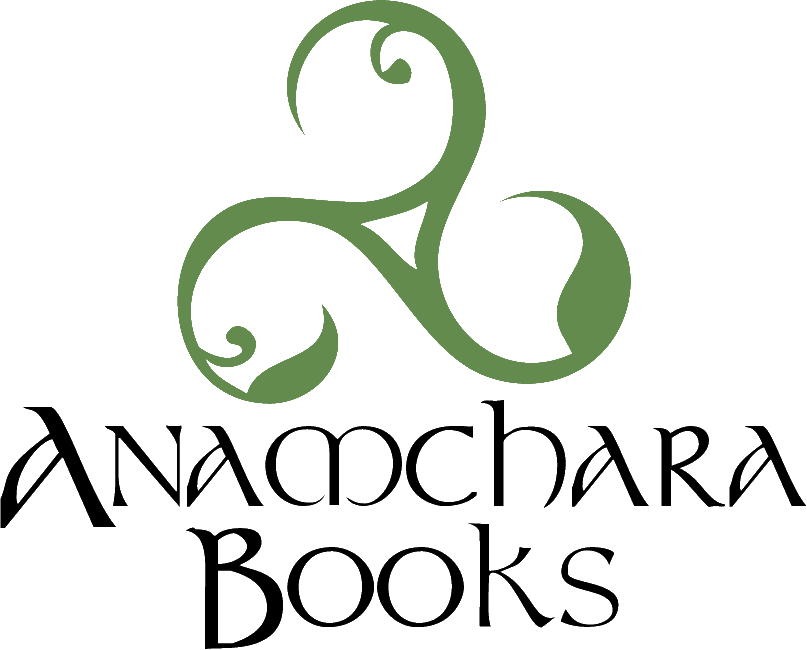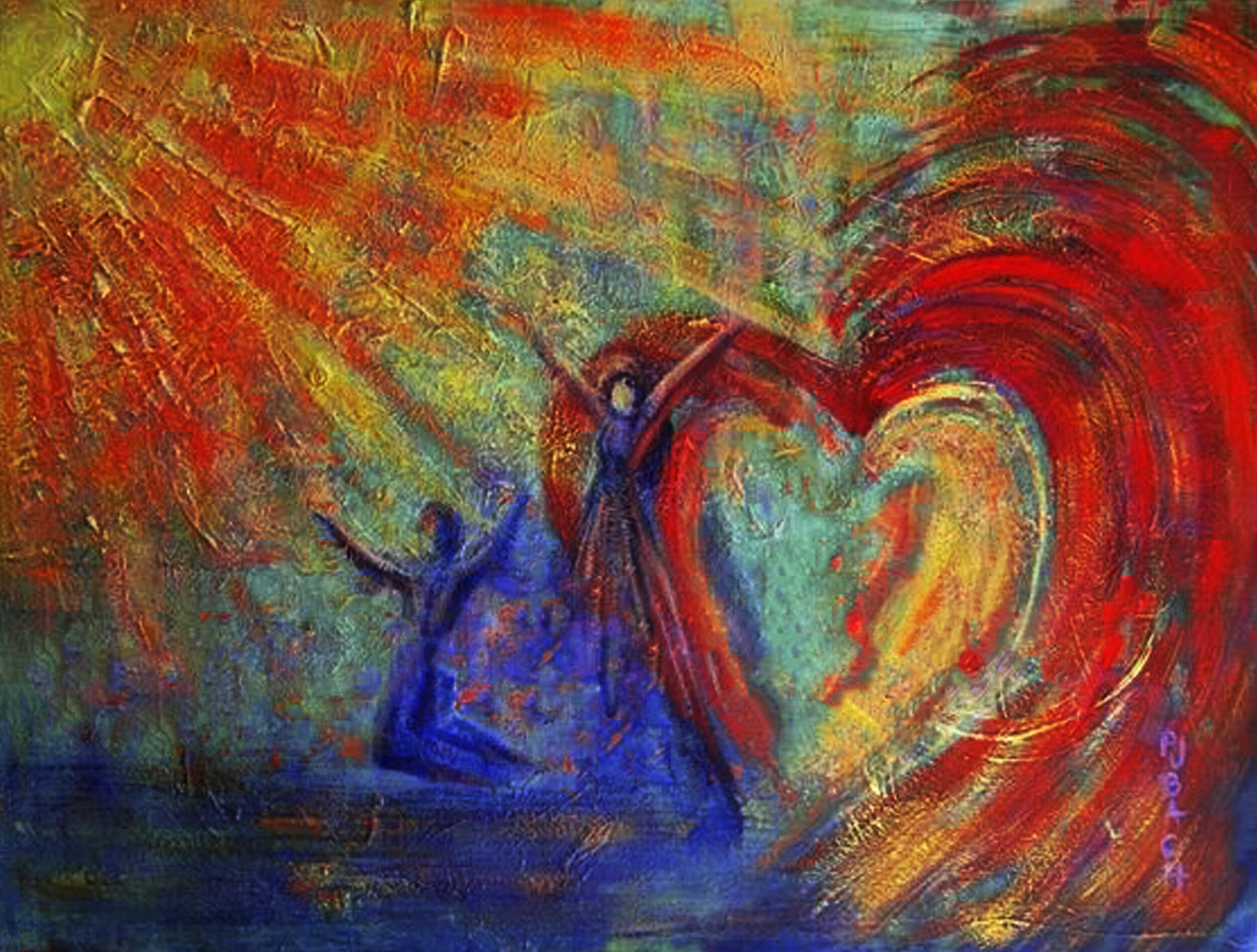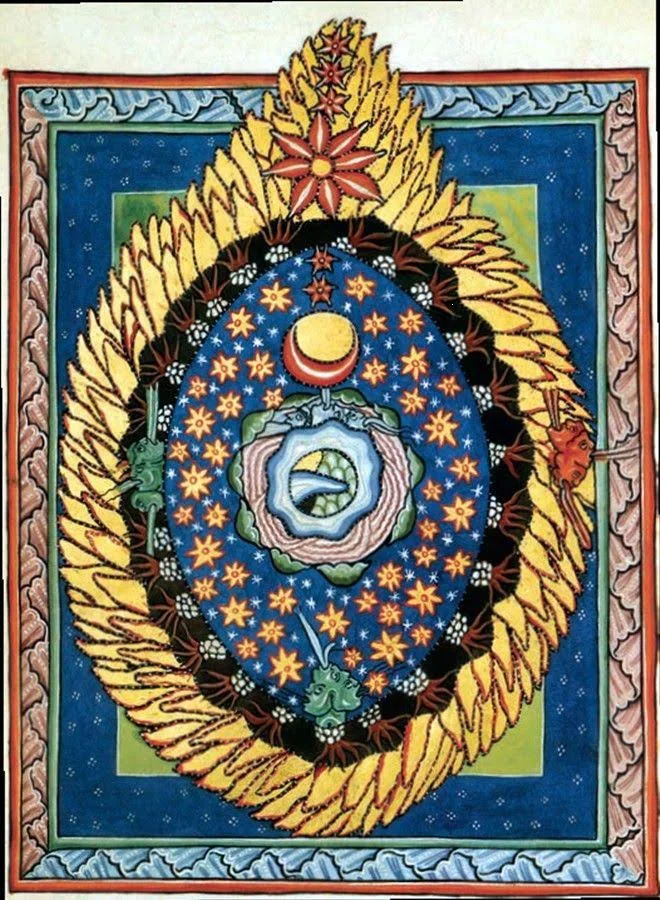Celebrating Indigenous People's Day
/Today is Indigenous People’s Day, also known as Día de la Raza. It’s a day to mourn the atrocities of the past, celebrate the richness of Indigenous and Latinx cultures, and focus on ways we can build a world of justice and beauty, a world where we see and honor the gifts we have received from the native peoples of the Americas, where we work together to restore all that white Western culture has stolen and broken. And so today, I am thinking in particular about the many ways I personally have been enriched by Indigenous and Latinx people and cultures.
Día de la raza parade in New York city.
When I was young, my family spent a summer traveling around some of the Western states. I saw the cliff dwellings where long-ago Indigenous peoples had made their homes in Mesa Verde, Arizona, and I got goosebumps, sensing the invisible presence of that busy, vital past, people coming and going about ordinary lives so different from my own. On that same trip, the poverty I saw on the Navajo reservation shocked me—but at the same time, something in me yearned to belong to such a rich culture. I remember looking into the eyes of a Navajo boy about my age, and realizing his reality was as “real” as mine. I wanted to know him; I longed to have him for my friend.
The cliff dwellings at mesa verde.
I was raised with the belief that my great-great-grandmother was a Seneca. I can’t actually prove that was the case, but growing up, I read as much as I could about the Seneca people. Everything I learned became part of my daily fantasy life. I was a little social misfit at school, not sure how to fit in or make friends—but pretending to be a Seneca girl gave me the sense I belonged somewhere after all, that my awareness of Nature as a friendly, motherly presence all around me wasn’t just my imagination but a reality I’d inherited from “my people.”
I grew up near Letchworth Park, where Mary Jemison lived with the Seneca for most of her life in the 1700s and early 1800. I read and re-read Lois Lenski’s version of Mary Jemison’s story—but what I really wanted was to be Seneca from birth.
I read somewhere that people always claim Indigenous great-grandmothers, never great-grandfathers; the author indicated this is a form of sentimentalized racism. I freely admit that my childish picture of what it meant to be Indigenous was romanticized; it was also more about me than it was about actual tribal people. Still, historically, a white man was a lot more likely to impregnate an Indigenous woman than an Indigenous man was likely to impregnate a white woman. The Mary Jemisons of the white world were few and far between.
According to legend (a legend I’m certain is based on fact), La Raza, a term for Latin America’s mixture of Spanish and Indigenous heritages, began when a white conquistador raped a Native woman; her child was the first Latinx person. Indigenous and Spanish religious beliefs, food traditions, artistic expression, and a host of other cultural factors blended together to create something new. A strong, vital culture rose above the tragedy and violence of its beginnings. La Virgen de Guadalupe—perhaps, as Anamchara author Ken McIntosh has suggested, Mary in her bodhisattva form—is a potent symbol of La Raza, as well as an expression of Divinity’s refusal to be confined by culture or societal expectations.
a street mural in Los Angeles. OUr Lady of Guadalupe shows up everywhere—on Taquerias, on street altars, on tattoos, on t-shirts. When she appeared to Juan Diego in the sixteenth century, she affirmed the value and identity of the Americas’ Indigenous people, as well as the new “raza” that was born from them.
When I was thirteen, my brother went to Peru as an exchange student—and died there in a plane crash. As a result, Peru became a pivotal place in our family’s life. The year after my brother’s death, two Peruvian teenagers came to live with us. My brother’s “Peruvian brother” was from a wealthy family that prided themselves on their “pure” Castilian heritage, while Chono, our exchange student, was equally proud of her “indio” background. Chono was only two years older than me, but she mothered me in ways I desperately needed during that lonely year; she taught me how to apply makeup, gave me boy advice, held me in her arms when I cried, and talked to me about a loving, mystical God I had never heard anyone else describe. A year later, when my parents and I went to Peru, Chono’s family welcomed us into their home. Her mother brought me to Catholic mass, where I sat surrounded by candlelight and prayer, feeling the presence of God.
Machu Pichu
My brother spent the day before he died exploring this magical, mysterious place. Two years later, I wandered through these same ruins, trying to feel his presence there among the ghosts of the proud and wise ancient Incans.
México
The following year, I went to Mexico for the first time—and fell in love. I fell in love with the country, but my best friend Pam and I also fell in love with two sweet, gentle boys named Carlos and Manuel. Carlos and I wrote long letters to each other once a week for the next year and a half. Since Carlos spoke no English, my Spanish vocabulary grew by leaps and bounds.
(That’s me on the far left, then Carlos, then Manuel, then Pam. I found this picture hugely embarrassing at the time because I thought I looked fat…!)
I went back to Mexico in college, spending three summers there working in an orphanage. “My boys” taught me Spanish puns and swear words. I ran through the hills with them, bounced old tires down the steep hillsides, dug up dormant frogs from dried-up lakebeds, caught snakes and tarantulas and scorpions; we made masa for tortillas, picking tiny bugs out of the flour; we dodged cockroaches at night while I put the boys to bed. I paraphrased the Chronicles of Narnia in Spanish for their bedtime stories; they told me ghost stories about La Llorona and other beings of the night. I would not be the same person I am today without the love and friendship of those grimy, tough little boys. They are a part of who I am, even now, so many decades later.
After college, my knowledge of Spanish got me a job in an inner-city crisis center. My clients were mostly Puerto Ricans, and I learned to drop my s’s when I spoke Spanish. I shared an office with a Puerto Rican woman who taught me how to make tamales, laughed at my “white-girl” naiveté, and became my friend. She shared with me what it was like to grow up Puerto Rican in the streets of New York City during the 1970s. I learned as much from her about how other people lived and felt as I ever had in any of my college psych and sociology courses.
Meanwhile, my friend Pam was working with Mexican migrant workers—and eventually married one of them. Martín’s friendship was important to both my husband and me. No one worked as hard as he did. No one was better at climbing trees. No one made me laugh the way he did. When he died a few years ago, he left an immense and unfillable hole in our lives.
No one works harder than the Mexican and other Latinx migrant workers who help put food on our tables. We owe them our gratitude every day.
Long ago, as a child in grade school, I learned that Columbus “discovered” America, beginning the centuries of the “manifest destiny” that brought Western culture and religion to the Americas’ Indigenous peoples. I am so very grateful I had the chance to learn firsthand that this story is based on lies. And on this day of celebration and remembering, I am so glad for the lifeblood of Indigenous and Latinx wisdom and beauty that flows through America’s veins. Our nation, our entire world, would be so flat, so gray, so boring without it!
Mural from the Mexican Museum of art in chicago.
































